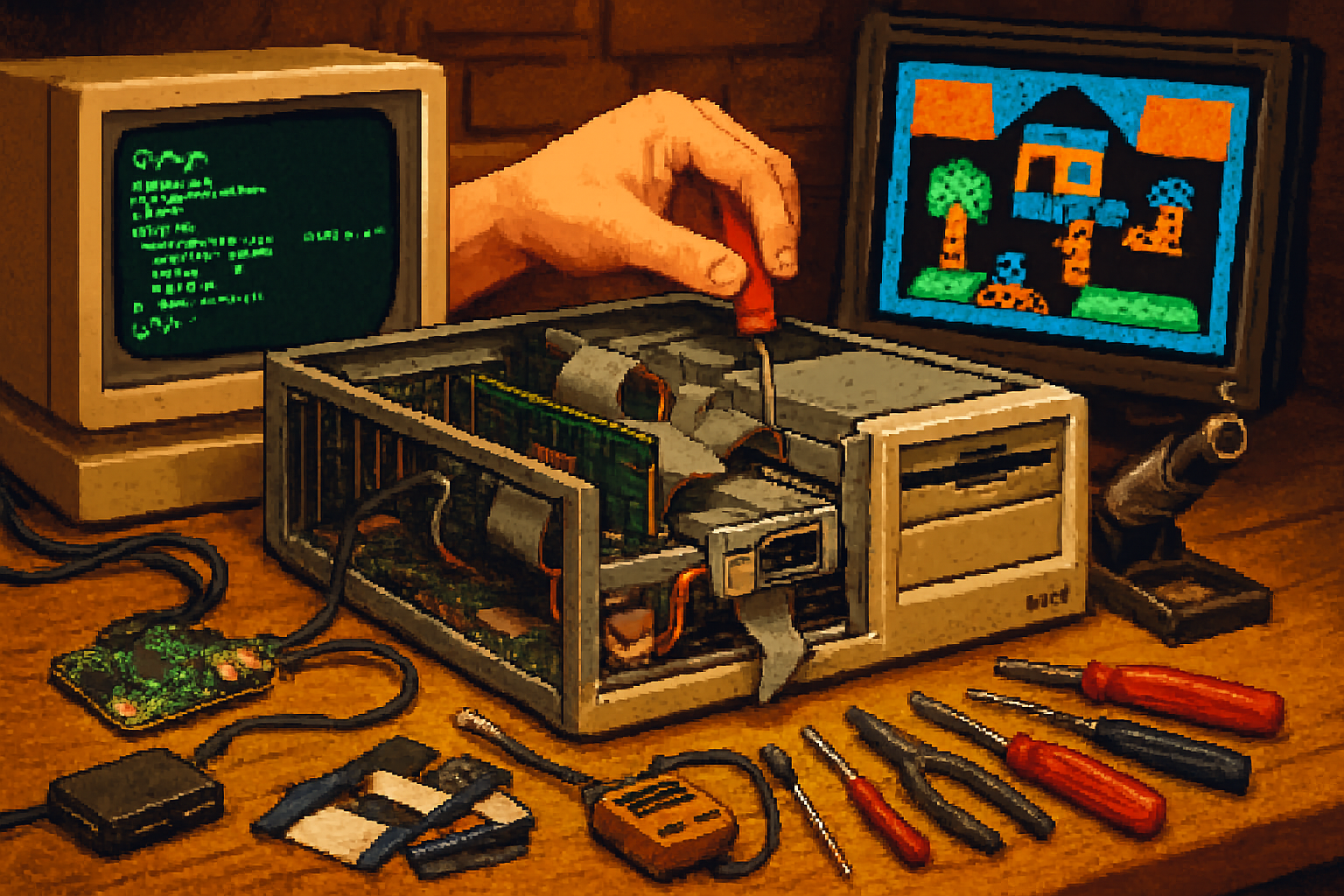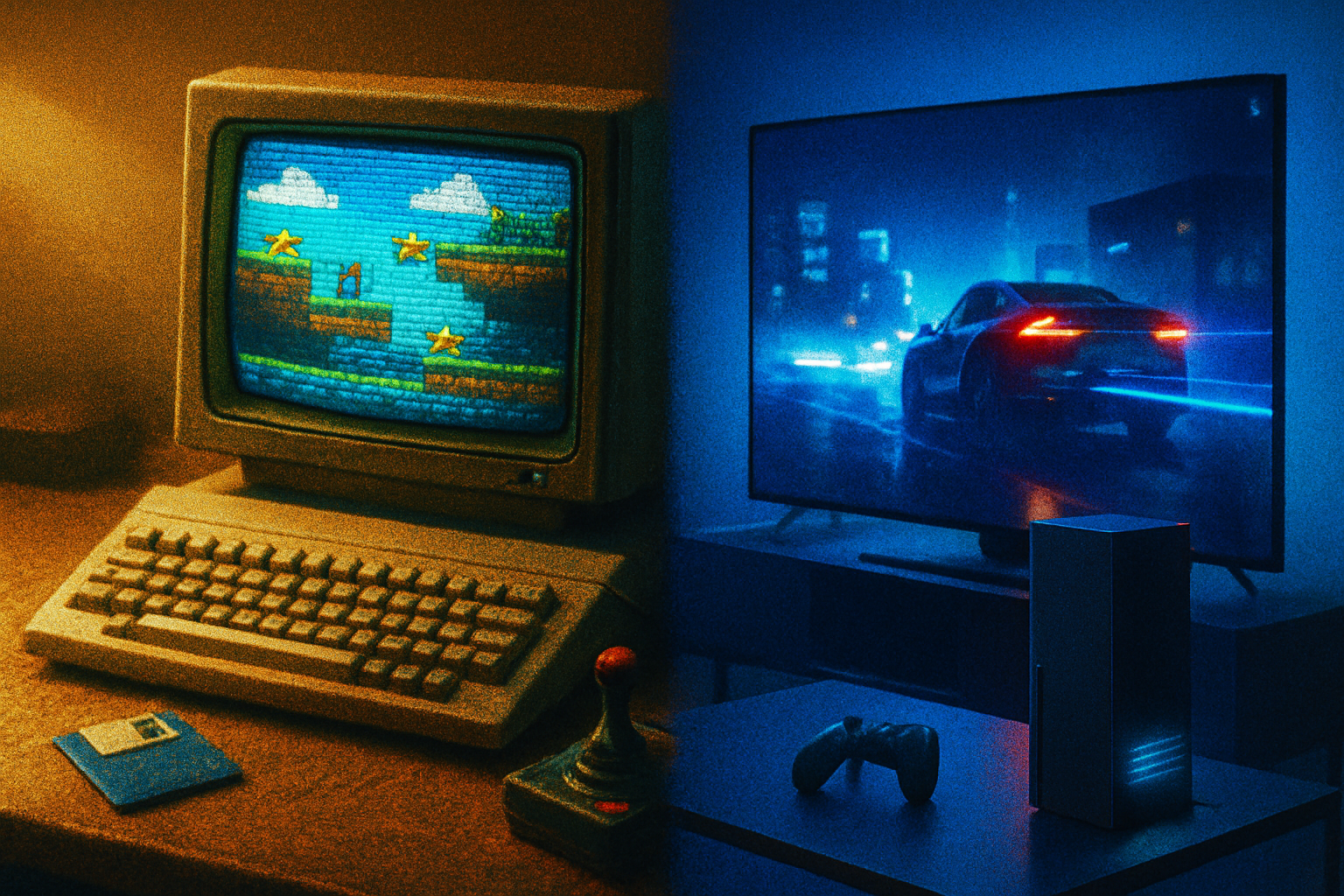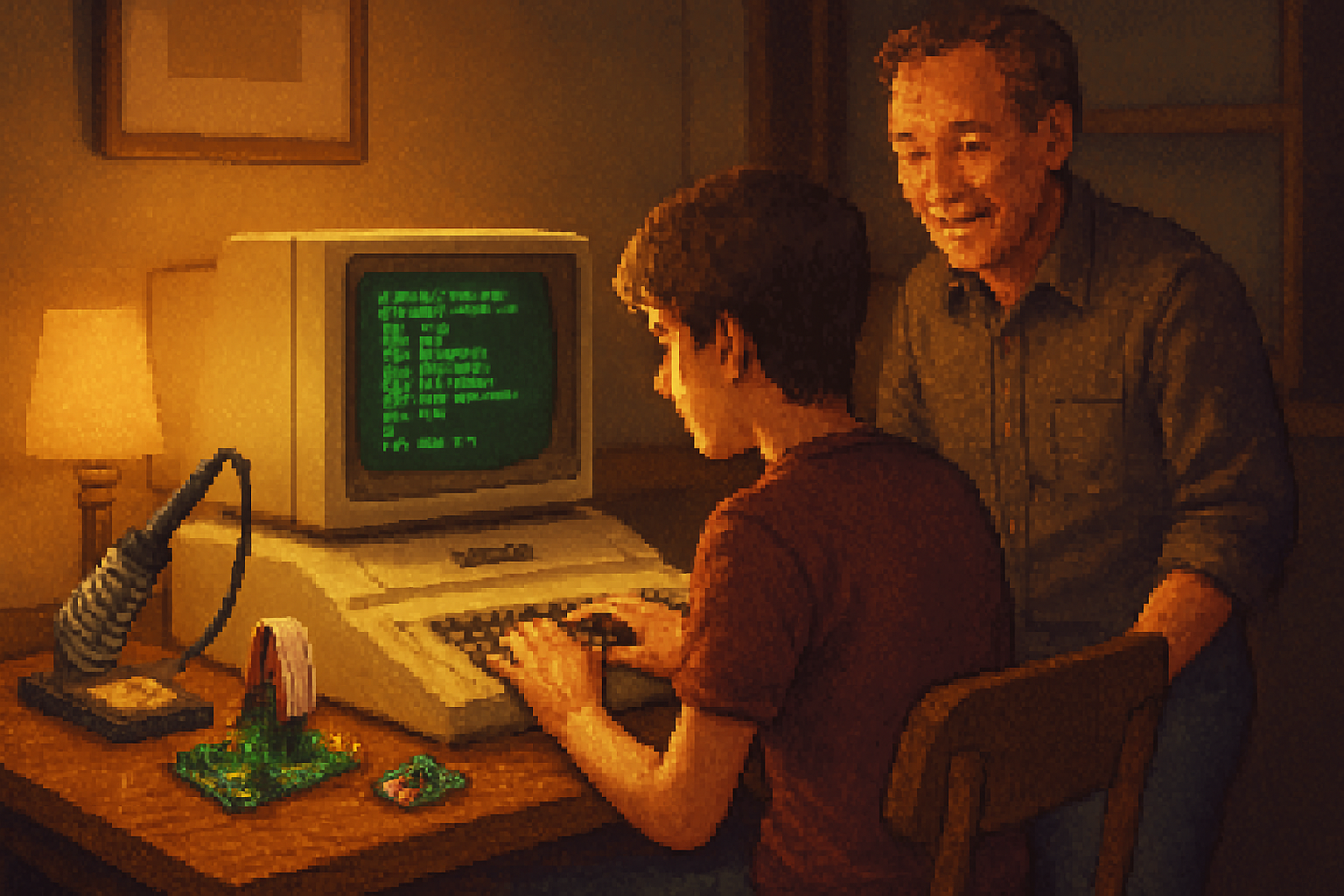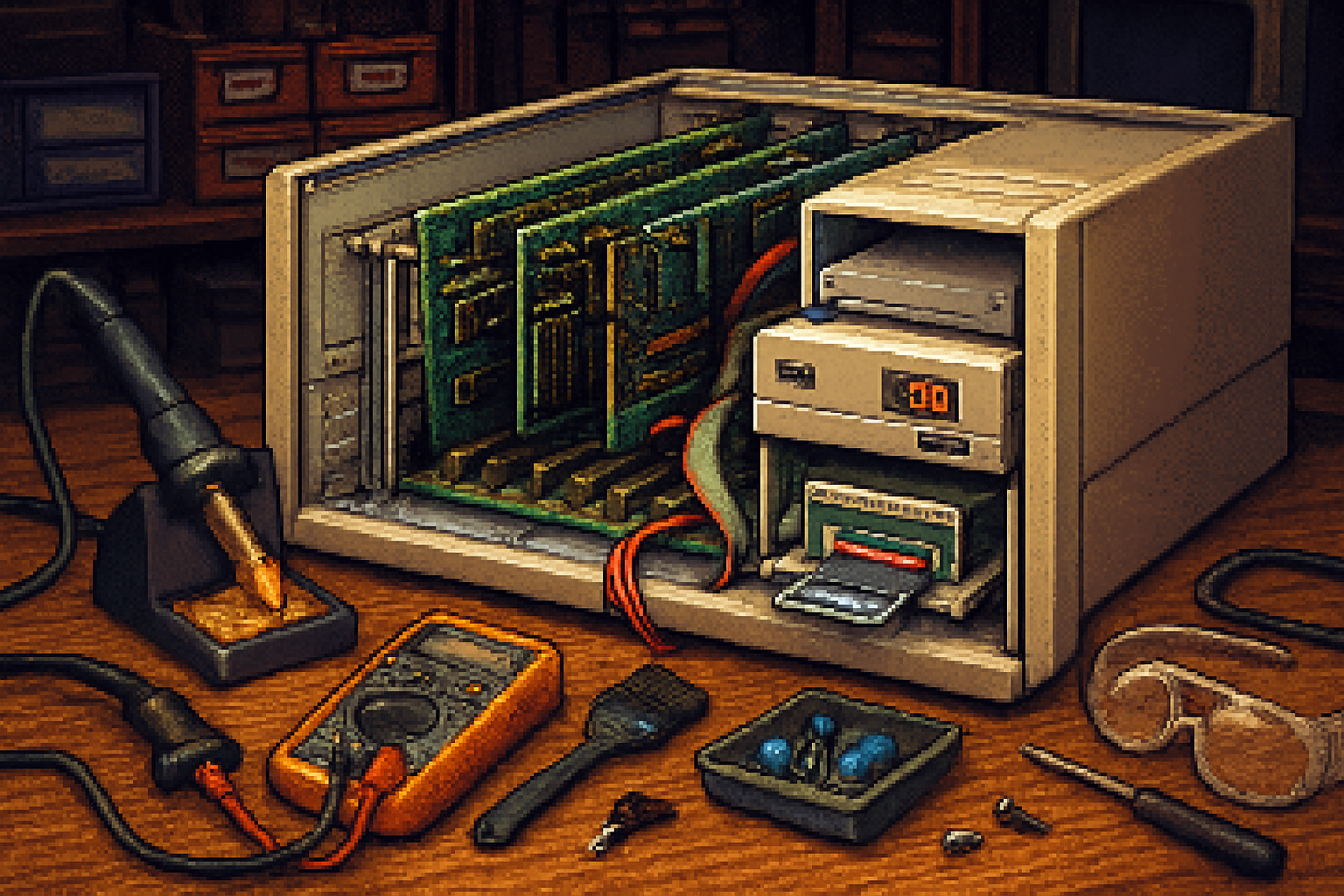· retrotech · 6 min read
Reviving the Sharp X68000: The Ultimate Retro Gaming Experience
A deep dive into the Sharp X68000 - its hardware and software strengths, why it remains a beloved platform for retro enthusiasts, and practical guidance for restoring systems and preserving its games and media.
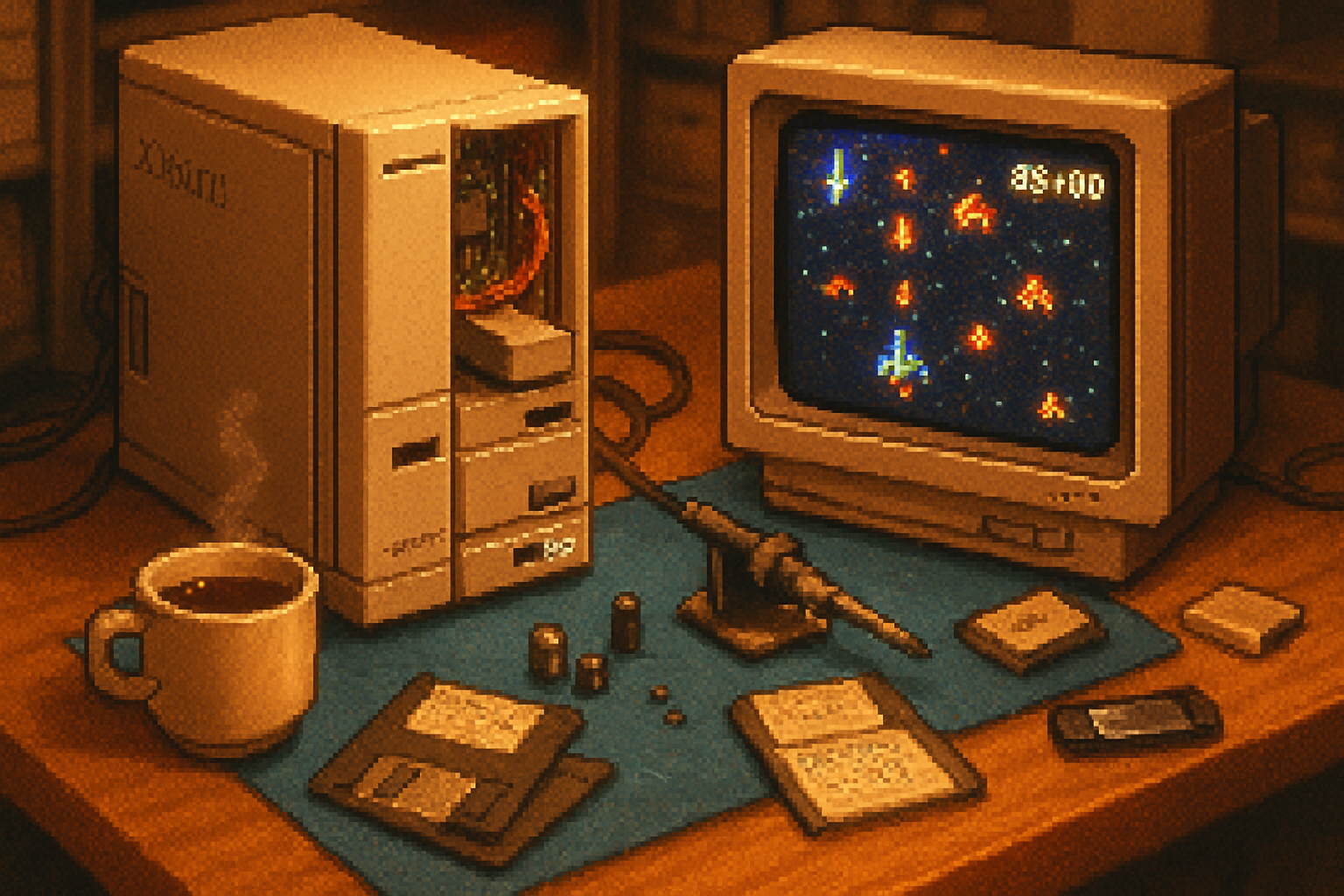
Why the X68000 still matters
Launched by Sharp in 1987, the X68000 (commonly called X68k) occupies a special place in retro gaming lore. Designed as a high-end, Japanese-market personal computer, the X68000 offered near-arcade fidelity that made it the go-to platform for polished arcade ports and cutting-edge home titles of the late 80s and early 90s. Enthusiasts praise it for its crisp RGB video output, powerful custom video hardware, and professional-grade input/audio options - qualities that still stand out when you experience an original machine.
For a concise technical overview, see the X68000 entry on Wikipedia: https://en.wikipedia.org/wiki/Sharp_X68000.
What made the hardware special
- Arcade-friendly architecture: The X68000’s combination of the Motorola 68000 CPU family (and later 68030 in more advanced models) plus powerful custom video chips allowed developers to reproduce arcade graphics and performance with astonishing fidelity.
- High-quality RGB output: Native analog RGB meant games looked clean and crisp on CRTs or through modern scalers (no composite fuzz).
- Flexible storage & expansion: Models shipped with floppy drives and (in later versions) SCSI hard drives. The bus and expansion options let hobbyists add MIDI, multi-port controllers, and other peripherals.
- Sound hardware: FM synthesis and PCM channels gave titles impressive music and effects for the era.
For the official emulator and preservation community efforts that reference these capabilities, check the MAME project: https://www.mamedev.org/.
Popular software and why it’s beloved
The X68000 library includes many well-regarded arcade ports and original titles - from shoot ’em ups and action games to demos that pushed the hardware. The system’s precision and performance made it a favorite for arcade-perfect ports of games that were otherwise hard to reproduce on home consoles of the time.
Because of its robust hardware and Japanese-market exclusivity, many X68000 releases remain unique artifacts of gaming history.
Planning a restoration: safety and preparation
Restoring an X68000 (or any vintage computer) begins with planning. Here’s a safe, practical checklist:
- Photograph the machine from all angles to record connectors, jumpers, and stickered parts.
- Work in a clean, well-lit area with ESD precautions (anti-static wrist strap if possible).
- Unplug the unit and let it sit powered off for a few minutes before opening.
- Identify model and revision - specifics (power supply ratings, board layout) can vary by model.
Quick safety tips:
- Always disconnect from mains power before working inside.
- If you’re unfamiliar with high-voltage capacitors (e.g., CRT or monitor boards), seek a qualified technician.
- Use a multimeter to verify voltages at the power connector before powering other parts.
Common hardware issues and fixes
Capacitor failure (recapping): Electrolytic caps dry out after decades. Recapping on the power board and key logic boards improves stability. If you recapped before, match capacitance, voltage, and ESR type. If you’re not comfortable soldering, find a repair shop.
Floppy drive wear: Read/write heads, belts, and motors age. Replace belts or use a Gotek USB floppy emulator to read disk images directly from USB (a popular modern substitute).
Clock battery leakage: Many X68000 motherboards use a backup battery; leaking batteries can corrode traces and pads. Remove leaking batteries promptly, clean corrosion with isopropyl alcohol, and repair traces as needed.
Aging power supplies: Replace aging caps and test rails carefully. Faulty power rails often cause boot failures or unstable operation.
CRT/monitor problems: If you’re dealing with the original CRT monitor, be mindful that CRT work is hazardous. Consider converting to RGB/component output or using an external monitor/scaler.
Useful modern upgrades and replacements
- Gotek USB floppy emulator: Lets you load disk images from a USB stick - ideal for gameplay and testing without fragile floppies.
- SCSI2SD / IDE-to-SD adapters: Replace failing SCSI or IDE HDDs with SD-based storage for faster, quieter operation.
- RGB mods & OSSC/framemeister: Keep the native RGB output and feed it into an OSSC (Open Source Scan Converter) or Framemeister for high-quality upscaling to modern displays: https://www.ossc.com/.
- FPGA projects and RGB scalers: For purists, FPGA or scanline generators preserve pixel timing and produce very accurate visuals.
Preserving games and media - a practical guide
Digital preservation keeps software playable for the future. Here’s a step-by-step approach to preserving X68000 media responsibly.
- Assess legal ownership: Only archive and distribute titles you legally own unless rights holders permit otherwise. Abandonware laws vary by country - act accordingly.
- Image floppies with modern hardware: Use tools like Greaseweazle or KryoFlux to read/flux-level dump old floppies reliably and create archival .img/.scp files:
- Greaseweazle: https://github.com/keirf/Greaseweazle
- KryoFlux: https://www.kryoflux.com/
- Create checksums and metadata: Generate SHA-256 checksums for each image and store metadata (labels, original media type, hardware model, any notes about copy protections or disk errors). Example commands:
# Create SHA-256 checksum for an image
sha256sum game_disk1.img > game_disk1.sha256- Store redundantly: Keep copies on at least two different storage media (local drive + offline archive, or cloud + local). For long-term archival, consider cold storage and migration plans.
- Document physical media: Photograph disks, documentation, and packaging. Record disk condition and any physical defects.
- Emulation & verification: Use emulators (XM6, MAME, etc.) to verify your disk images boot and run. MAME’s X68000 driver is a useful reference for behavior: https://www.mamedev.org/.
- Share responsibly: If you’re allowed to distribute, consider contributing verified dumps to community archives or contacting rights holders to secure permissions.
Emulation and testing
- XM6 - a full-featured X68000 emulator used by many in the community (search for XM6 on official project sites).
- MAME - includes X68000 support and is handy for cross-checking behavior against a preservation reference: https://www.mamedev.org/.
Emulation is invaluable for testing images without risking original hardware and for debugging copy protection quirks.
A sample restoration workflow (concise)
- Photograph and document.
- Open chassis and visually inspect for corrosion, leaking capacitors, or burnt components.
- Test power supply voltages with no-load where feasible.
- Replace electrolytic capacitors on power board and any visibly bulging caps elsewhere.
- Replace cracked or leaking battery; repair corroded traces.
- Replace floppy belts or install a Gotek for initial software testing.
- Use a known-good boot disk to test CPU, video, and sound.
- Image original floppies with Greaseweazle/KryoFlux for preservation and for running from emulation/Gotek.
Community and resources
The X68000 scene is active and friendly. Look for user groups, forums, and Discord/Reddit channels focused on X68k restoration for model-specific advice, parts, and documentation. Key global resources include:
- X68000 entry on Wikipedia: https://en.wikipedia.org/wiki/Sharp_X68000
- MAME project (emulation & reference): https://www.mamedev.org/
- Greaseweazle (floppy imaging): https://github.com/keirf/Greaseweazle
- KryoFlux (professional-level flux imaging): https://www.kryoflux.com/
- Internet Archive (for public domain docs/manuals): https://archive.org/
Preservation ethics and legality
Preserving and restoring vintage systems is about cultural heritage. That said, respect copyright and licensing. When in doubt:
- Don’t redistribute commercial game images unless you have explicit rights.
- Share documentation and technical information freely when it is legal to do so.
- Seek permission from rights holders for broader archival distribution.
Final thoughts
The Sharp X68000 remains one of the most rewarding retro platforms to collect, restore, and preserve. Its arcade-accurate performance, exceptional RGB video, and memorable software library make it a living piece of gaming history - one that rewards patience, careful restoration, and a methodical approach to preservation. Whether you’re dusting off a boxed unit, imaging fragile floppies, or simply learning how the hardware works, the X68000 community offers rich technical challenges and deep rewards.
If you’re starting a restoration project, prioritize safety, document everything, and join the community - a decade from now, your careful work may be the difference between a lost title and a playable artifact.
